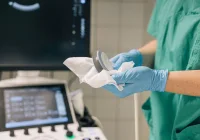Healthcare organisations are balancing expanding imaging archives with storage, migration and security costs, while debating how long to keep very old studies. Historical images can shape interpretation and reduce uncertainty, yet many retention schedules impose time limits without clinical evidence to guide deletion. An academic health system examined its enterprise archive to quantify how often exams older than a decade are accessed and whether those accesses reflect clinical use. The review considered modality, anatomical region and reading division and included a targeted chart sample to validate intent. The findings show regular return to decade-old priors across modalities and specialties, highlighting implications for policy, operations and patient care where rigid age-based purges risk removing material still used in everyday workflows.
Large-Scale PACS Query and Sampling
A system-wide query of the enterprise Picture Archive and Communication System (PACS) identified 4,341,278 unique exams already older than 10 years. Event logs showed that 200,933 of these were loaded for viewing within the preceding two years, equating to 5% of the decade-old archive. Loading indicates potential relevance, but independent corroboration was sought. In a retrospective review of 100 randomly sampled cases, 27% had explicit documentation in the comparison field of new radiology reports confirming use of older priors, spanning radiography, computed tomography (CT) and magnetic resonance imaging (MRI). A further 22% showed circumstantial evidence of clinical intent, with clinic notes on the same day referencing the relevant body region despite no new imaging. Fourteen percent were inconclusive due to lack of documentation, and 7% appeared non-contributory, consistent with automated or protocol-driven loading without use. A distinct mammography subset required separate interpretation because reporting conventions can obscure the use of very old priors even when viewed.
Must read: Lean CT Storage Cuts Emissions by up to 89% .
Taken together, the large-scale query and chart sampling indicate that a meaningful fraction of decade-old studies is still surfaced during clinical workflows. Ready availability within PACS likely lowers retrieval friction, encouraging comparisons that can inform assessments of interval change and stability.
Patterns of Access Across Modalities and Anatomy
Access was broad, not confined to a single modality or service. Of the decade-old studies loaded in the two-year window, 41% were mammography, 24% radiography, 12% CT, 10% ultrasound, 7% MRI, 3% fluoroscopy, 2% nuclear medicine and 1% dual-energy X-ray absorptiometry (DEXA). By anatomy, 45% involved breast, 11% chest, 10% extremities, 10% abdomen or pelvis, 8% spine, 8% unknown and 6% head, with whole body, neck or heart each at 1% or less. Reading divisions were correspondingly distributed: breast 37%, unknown 19%, neuro and musculoskeletal 10% each, abdominal 9%, thoracic 7%, paediatric 4%, cardiovascular 2%, nuclear medicine 1% and interventional disciplines 1% combined.
Mammography merits context. In the 100-case sample, 30% were mammography with load dates coinciding with new mammograms. Reports typically documented comparisons with priors up to five years old yet did not list older comparisons even when available and reviewed. Local breast imaging faculty indicated that very old priors are often consulted to evaluate areas whose coverage can vary over time, but system constraints and reporting practices can prevent explicit citation. The mammography subset was therefore classified as an anecdotal mix of use and non-use, acknowledging frequent access and documentation gaps.
Across modalities and body regions, the data suggest clinicians and radiologists continue to revisit older images to support decision-making. While some loads are likely non-clinical or automated, the combined quantitative and qualitative signals point to persistent clinical pull for decade-old priors in routine practice.
Policy Context and Operational Implications
Access patterns intersect with records disposition requirements that, in some jurisdictions, mandate destruction of digital medical images after a set period. Under a state-level general schedule effective in 2022, digital images at state institutions are slated for deletion after 10 years, including radiography, CT, MRI and ultrasound, with a requirement to overwrite data or destroy storage media rather than merely delete files. The rationale emphasises efficiency, privacy and security and does not cite medical evidence on clinical impact. Executing selective purges within large, mixed-use archives is technically complex, with risks to performance and coherence if subsets are removed.
Minimum retention frameworks add complexity. Technical standards for electronic medical imaging emphasise compliance with facility, state and federal rules without prescribing a destruction term. Accreditation and payer rules often set minimum retention periods, sometimes longer in contexts such as research, mammography, paediatrics or toxic exposures and with variability across states and facility types. This heterogeneity is difficult to translate into practical purge criteria for enterprise archives.
Beyond immediate clinical use, large-scale deletion can affect longitudinal care for conditions that evolve over many years and reduce value for research and education that benefit from extensive, well-annotated corpora. There are labour implications too, as applying nuanced purge rules and managing exceptions for litigation or investigation can impose operational burdens.
In light of local evidence showing ongoing access to decade-old studies, leaders at the institution chose to retain older exams and engage with policymakers to seek flexibility in disposition requirements for medical imaging tests. The analysis does not propose a universal deletion threshold and recognises that patterns and risks vary by institution and population.
Routine access to examinations older than 10 years across modalities, anatomy and divisions indicates that historical imaging holds enduring clinical value when readily available. Chart review supports the interpretation that a substantial portion of loads reflects direct or indirect use in care, even when reporting systems do not capture every comparison. Against heterogeneous retention rules, technical constraints and cost pressures, the evidence argues for caution with age-based purges lacking clear clinical criteria. Preserving access to older priors where feasible, aligning operations with regulatory requirements and encouraging further clinical evaluations can help protect patient benefit while addressing governance, security and efficiency.
Source: Journal of Imaging Informatics in Medicine
Image Credit: iStock








